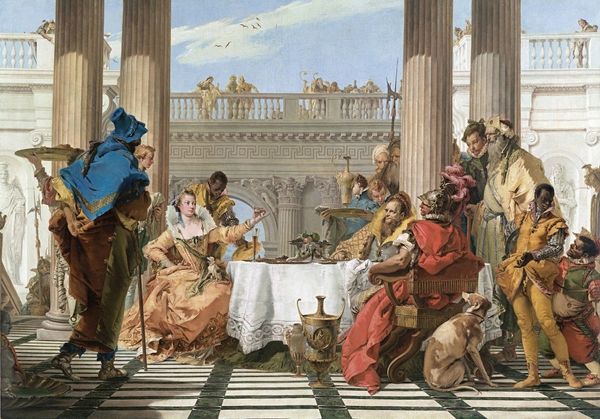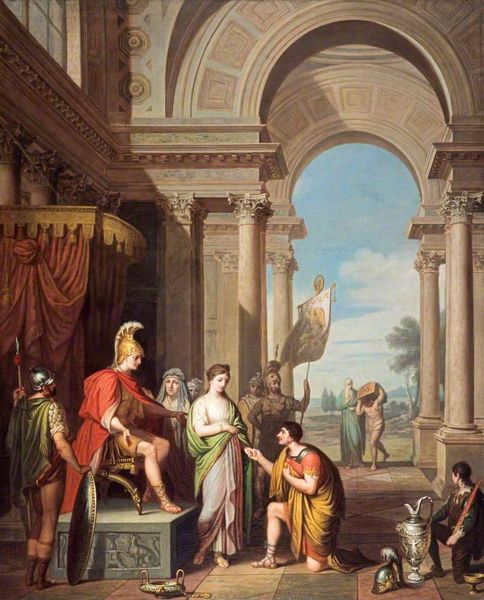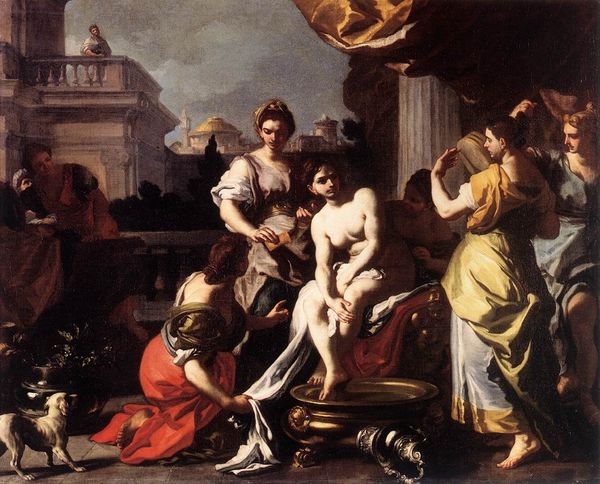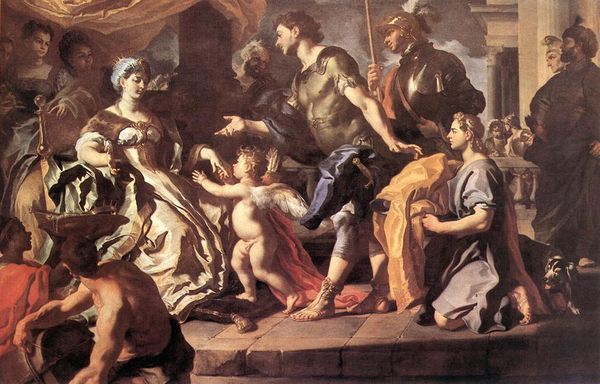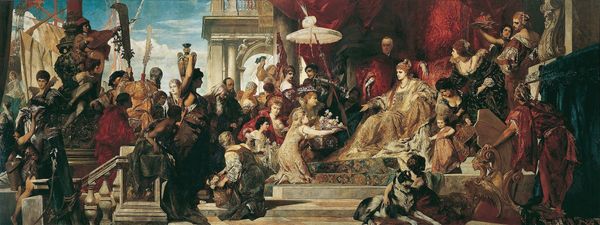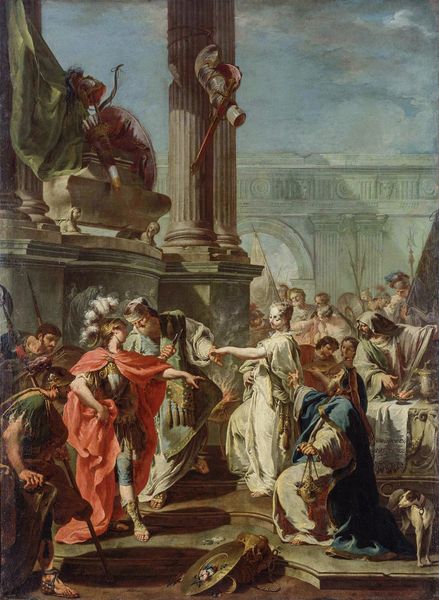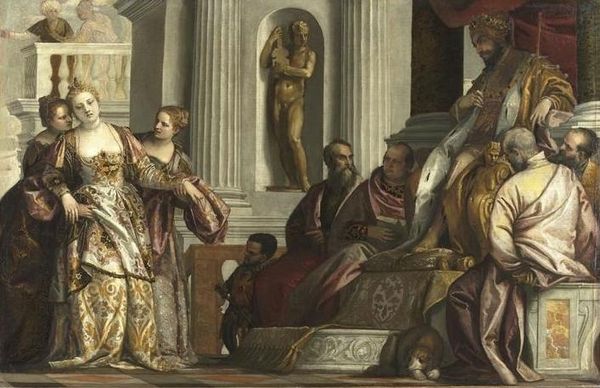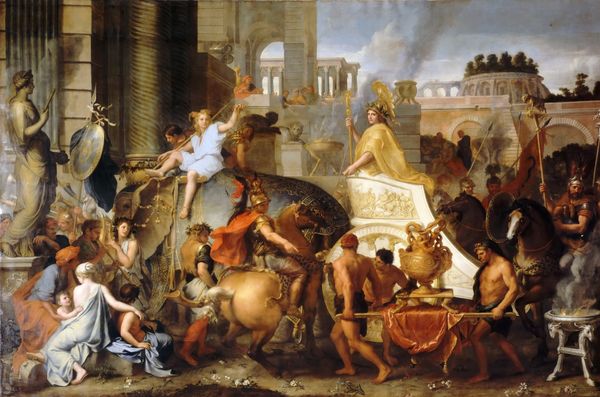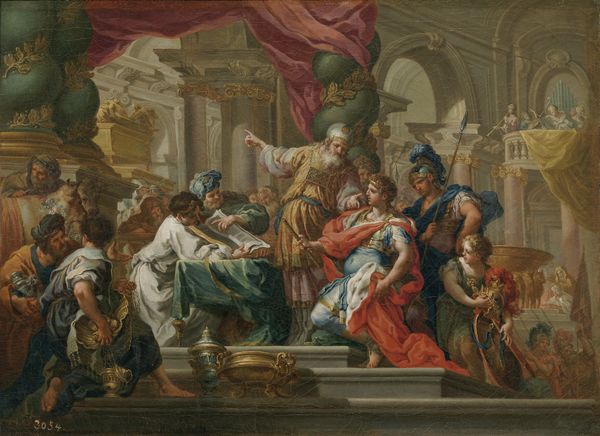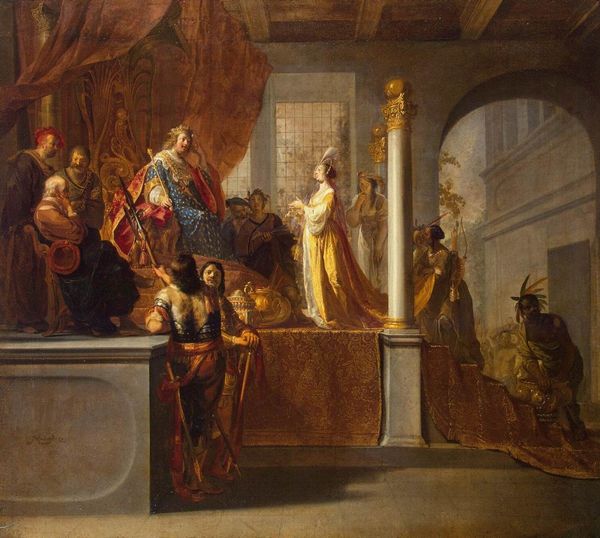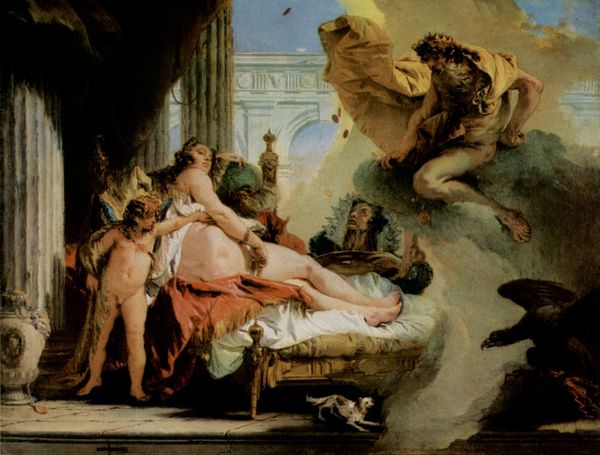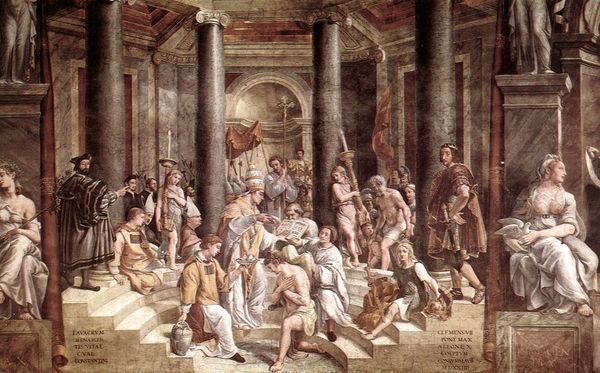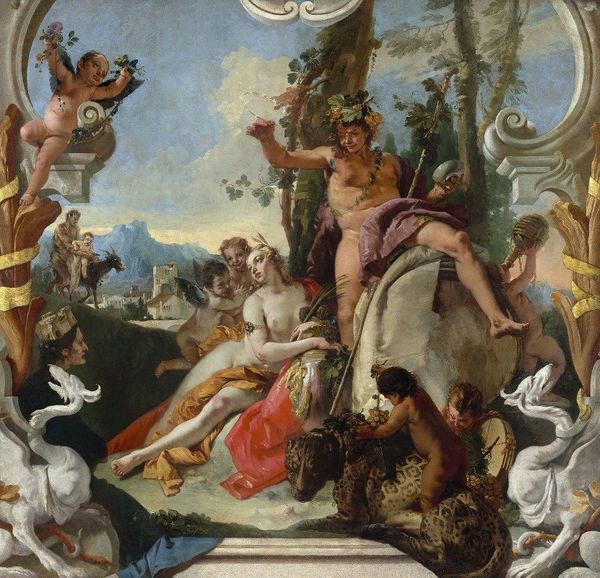
Maecenas Presenting the Liberal Arts to Emperor Augustus 1743
0:00
0:00
Dimensions: 70 x 89 cm
Copyright: Public domain
Curator: Here we see Giovanni Battista Tiepolo's "Maecenas Presenting the Liberal Arts to Emperor Augustus," created around 1743 using oil paint. It's quite a grand scene, isn't it? Editor: Grand indeed! My immediate reaction is one of...performance. It feels very staged, very deliberate. Like a meticulously crafted tableau vivant. It's bright, almost dazzling, but with this undercurrent of theatricality. Curator: I find myself drawn to the material contrast. Look at the hard, sculpted marble versus the soft, flowing drapery. Think of the artist grinding the pigments, layering them meticulously to achieve this effect of luxurious textures, highlighting social status through access to such materials. Editor: Absolutely. And it’s all for show, isn’t it? That gilded opulence screams Baroque even while its structure echoes Neoclassicism. Tiepolo blends allegory with portraiture to craft this elaborate fiction about power and patronage. Though honestly? All the classical flourishes and bright robes don't quite conceal the blatant transaction taking place. The arts being essentially "given" to power. Curator: It's intriguing to examine patronage itself as a material exchange, then. Tiepolo receives commissions; the wealthy display their sophistication; the Emperor cultivates an image of refined leadership. The canvas then, becomes a record of that arrangement, immortalizing this relationship within the materiality of paint and canvas. It highlights how cultural value becomes entangled with economic realities. Editor: Exactly! One almost wonders what Augustus *thought* of the "gift" - of art literally being presented. Still, look at those faces - such an interesting depiction of subservience mixed with a knowing artistic glance. You can't help but think that someone in the scene has their tongue firmly planted in their cheek. I love the idea that artists were, back then and even now, using their artistic practice as their voice within strict parameters. That this piece becomes, by default, quite cutting social commentary. Curator: A crucial insight - looking at who had agency in production here, is what allows for contemporary viewers to consider who may be erased or glossed over, even through the best pigment and skill. Editor: A painting like this, I think, offers a fascinating peek behind the curtain of history – not just at what's depicted, but at the whole apparatus that made it possible. Curator: It's like holding a mirror to the processes that sustain artmaking across eras.
Comments
No comments
Be the first to comment and join the conversation on the ultimate creative platform.
